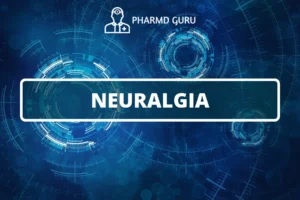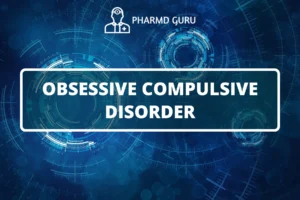Pain is a complex and multifaceted sensory experience that can significantly impact an individual’s quality of life. Effective pain management involves understanding the etiopathogenesis, or underlying causes and mechanisms, of pain, as well as utilizing appropriate pharmacotherapy to alleviate symptoms. In this article, we will explore the etiopathogenesis of pain and discuss the pharmacotherapy options used in pain management, including the understanding of pain pathways.
SCROLL DOWN TO THE BOTTOM OF THIS PAGE FOR ACTUAL NOTES.
Table of Contents
- Introduction
- Understanding Pain
- Etiopathogenesis of Pain
- Nociceptive Pain
- Neuropathic Pain
- Inflammatory Pain
- Pain Pathways
- Pharmacotherapy for Pain Management
- Nonsteroidal Anti-Inflammatory Drugs (NSAIDs)
- Opioids
- Adjuvant Medications
1. Introduction
Pain is the body’s way of signaling potential or actual tissue damage. It can arise from various sources and be categorized into different types, including nociceptive pain, neuropathic pain, and inflammatory pain. Understanding the underlying causes and mechanisms of pain is crucial for effective pain management.
2. Understanding Pain
Pain is a complex phenomenon involving the perception and interpretation of sensory signals by the nervous system. It serves as a protective mechanism, alerting the body to potential harm or injury. However, when pain becomes chronic or persistent, it can have a significant impact on an individual’s physical and emotional well-being.
3. Etiopathogenesis of Pain
The etiopathogenesis of pain varies depending on its type and underlying cause. Let’s explore the three main categories:
4. Nociceptive Pain
Nociceptive pain results from the activation of specialized nerve fibers called nociceptors in response to actual or potential tissue damage. It is typically a sharp, well-localized pain that serves as a warning sign. Common causes of nociceptive pain include trauma, surgery, inflammation, and diseases affecting organs or tissues.
5. Neuropathic Pain
Neuropathic pain arises from dysfunction or damage to the nervous system itself. It is often described as a shooting, burning, or electric shock-like pain. Conditions such as diabetic neuropathy, post-herpetic neuralgia, and nerve compression syndromes can lead to neuropathic pain.
6. Inflammatory Pain
Inflammatory pain occurs as a result of tissue inflammation or injury. It is typically associated with redness, swelling, and warmth in the affected area. Inflammatory pain can be acute or chronic, and conditions such as arthritis, autoimmune disorders, and infections can cause it.
7. Pain Pathways
The transmission of pain signals from the site of injury or inflammation to the brain involves complex pain pathways. These pathways consist of a series of interconnected nerves and structures that relay sensory information.
The two main pathways involved in pain transmission are the spinothalamic pathway and the dorsal column-medial lemniscal pathway. The spinothalamic pathway carries pain, temperature, and crude touch sensations, while the dorsal column-medial lemniscal pathway transmits fine touch, proprioception, and vibration sensations.
Understanding these pain pathways helps healthcare professionals target specific areas for intervention and implement appropriate pain management strategies.
8. Pharmacotherapy for Pain Management
Pharmacotherapy plays a crucial role in pain management, aiming to alleviate pain, improve function, and enhance the overall well-being of individuals experiencing pain. The choice of pharmacotherapy depends on the type and severity of pain, as well as individual factors such as medical history and potential risks.
9. Nonsteroidal Anti-Inflammatory Drugs (NSAIDs)
NSAIDs, such as ibuprofen and naproxen, are commonly used to manage mild to moderate nociceptive and inflammatory pain. They work by reducing inflammation and blocking the production of pain-inducing substances called prostaglandins.
10. Opioids
Opioids, such as morphine, oxycodone, and codeine, are powerful analgesic medications used for moderate to severe pain. They bind to opioid receptors in the brain and spinal cord, blocking pain signals. Opioids should be used with caution due to their potential for addiction and side effects, and their use requires close monitoring by healthcare professionals.
11. Adjuvant Medications
In addition to NSAIDs and opioids, various adjuvant medications can be used to enhance pain management. These include antidepressants, anticonvulsants, muscle relaxants, and topical agents. Adjuvant medications target specific mechanisms involved in pain transmission and modulation, providing additional pain relief or addressing specific pain types, such as neuropathic pain.
ACTUAL NOTES:




